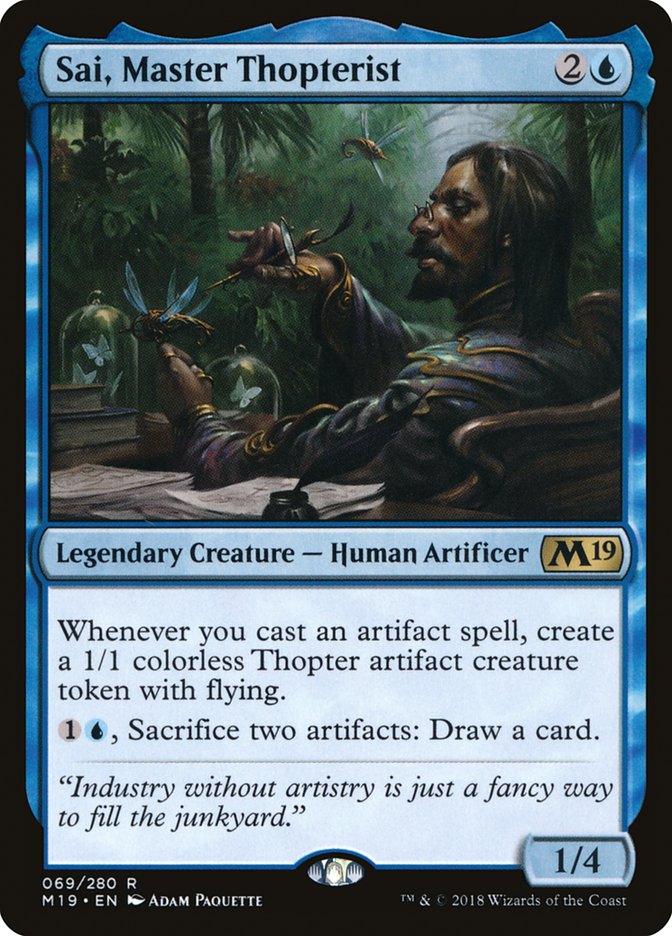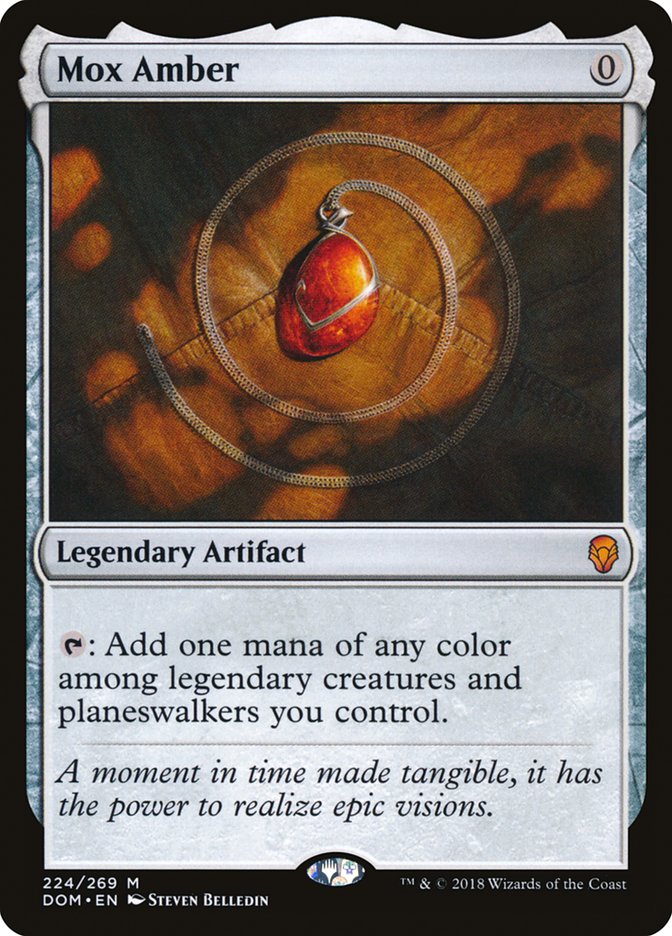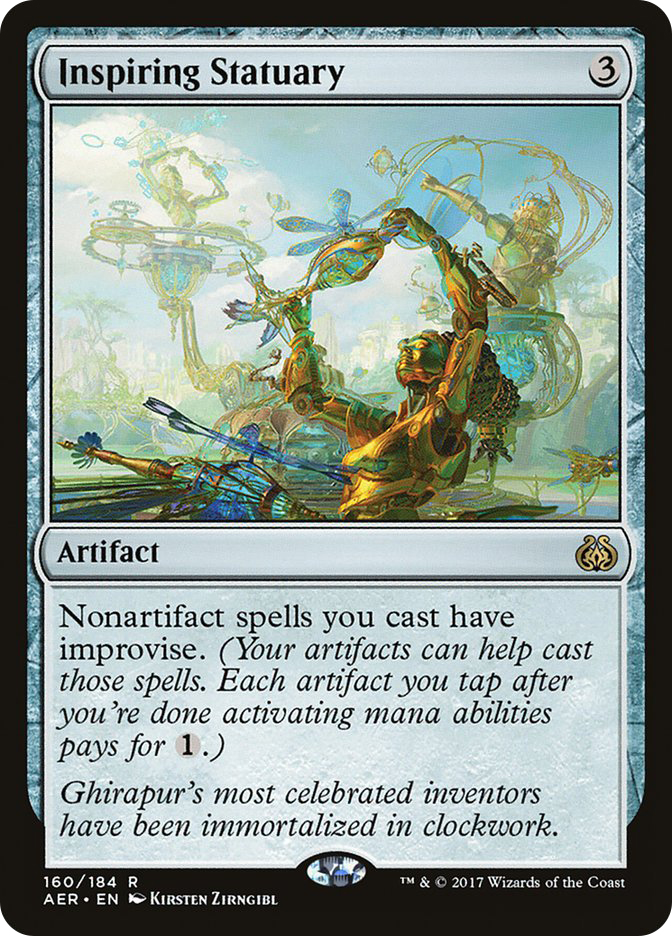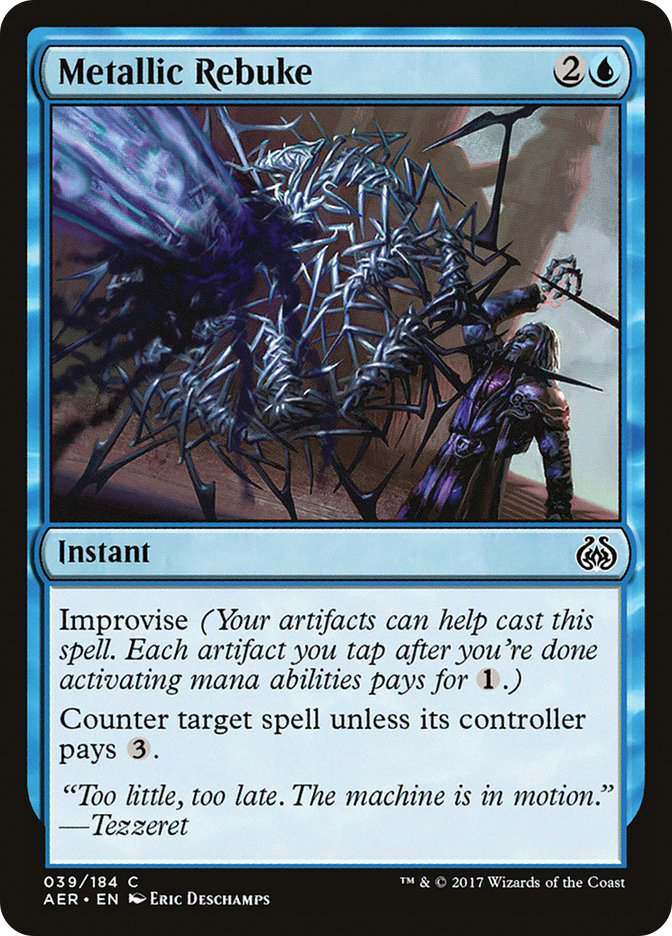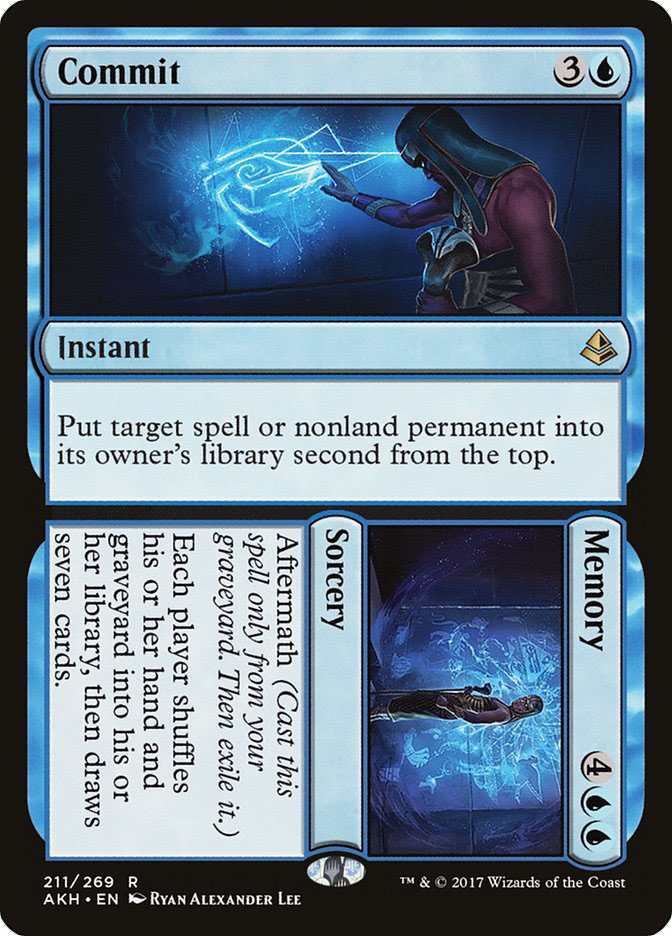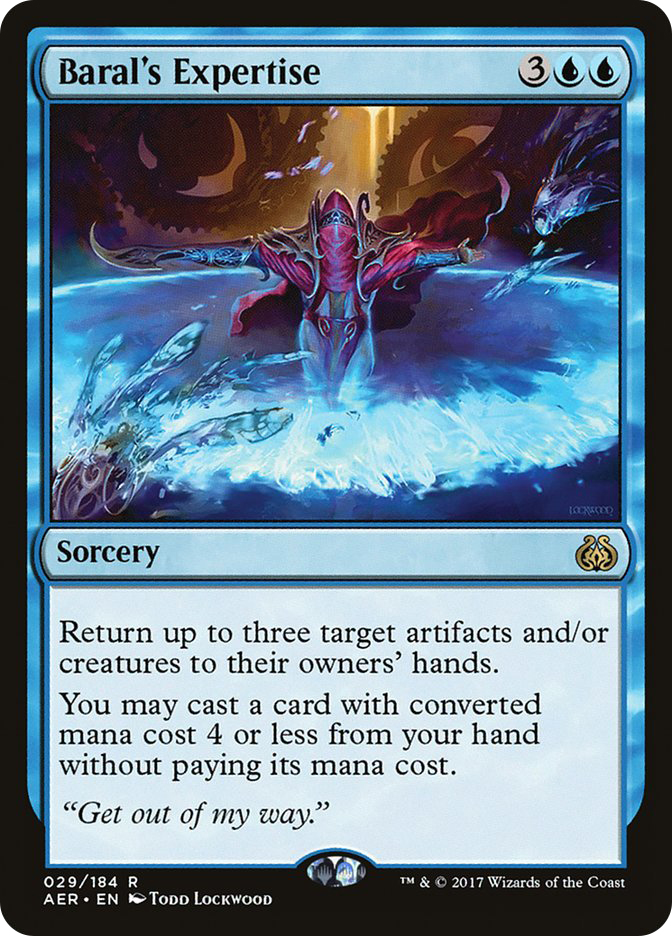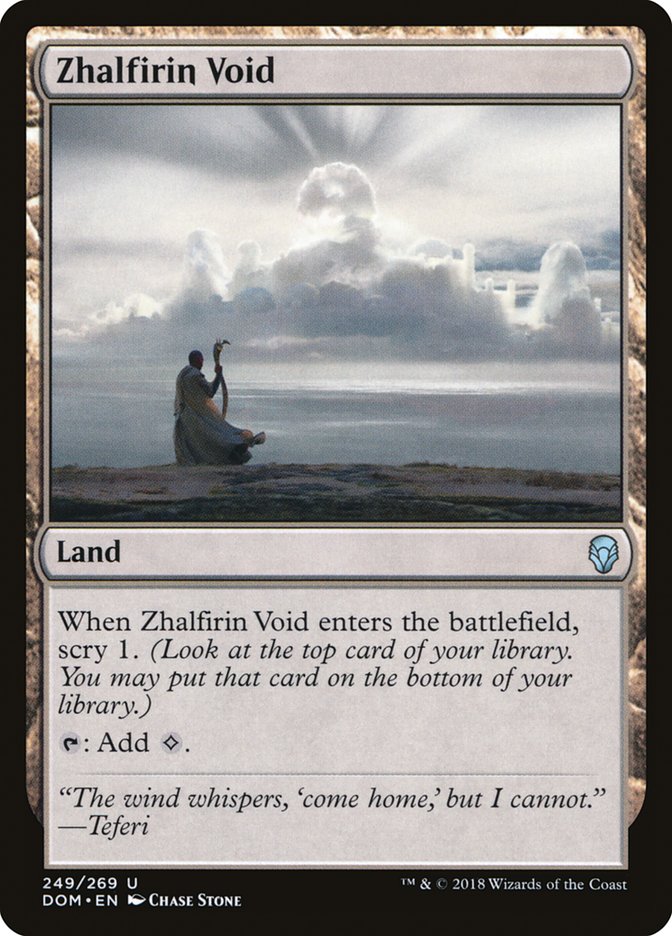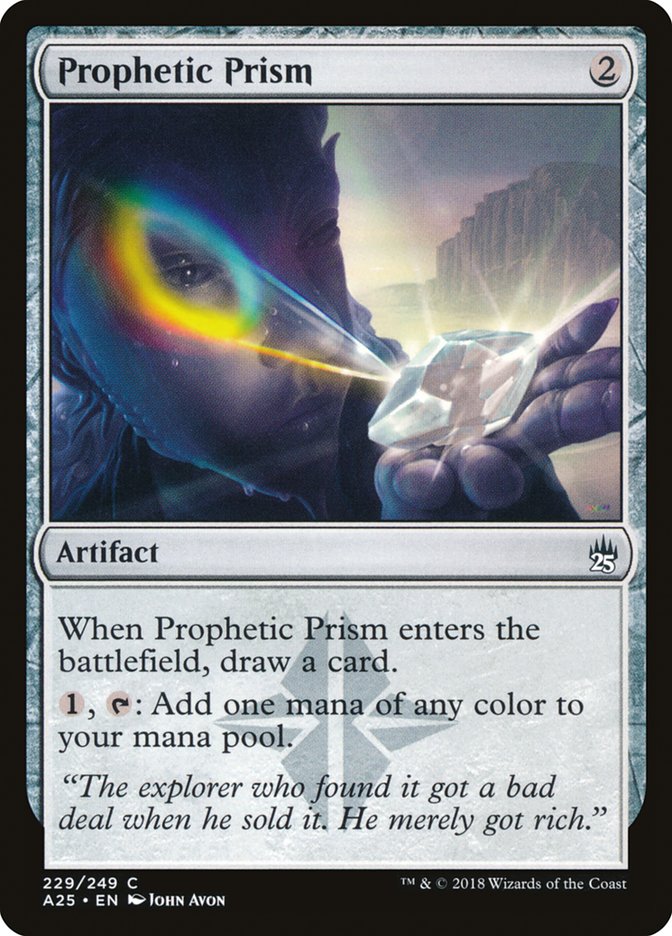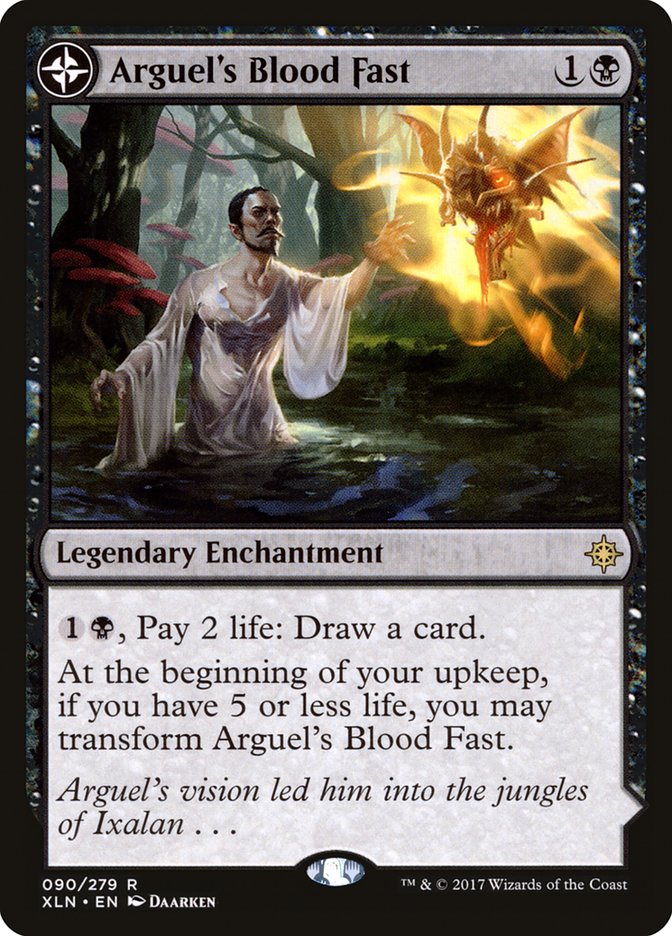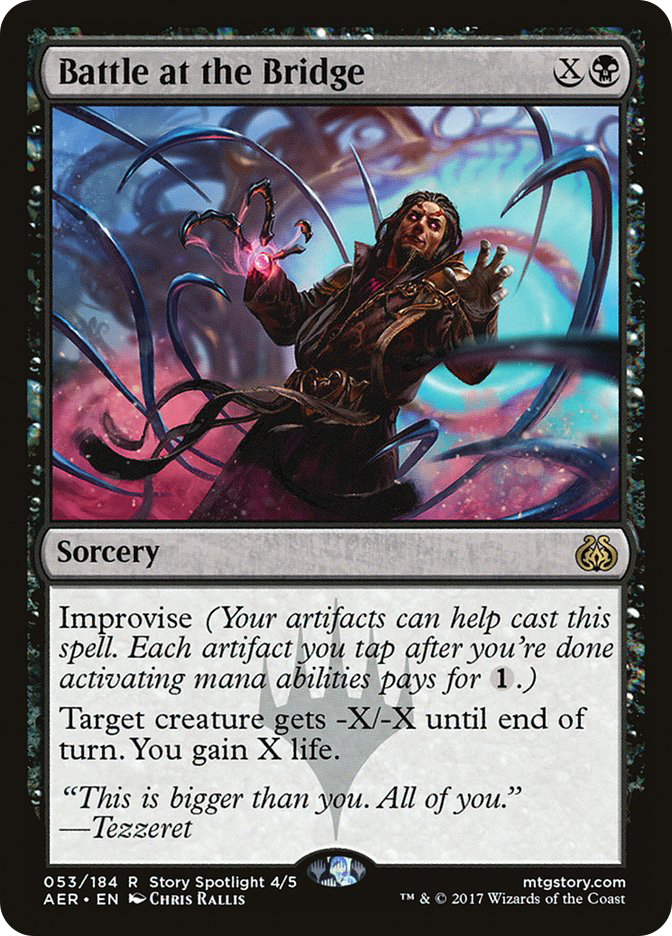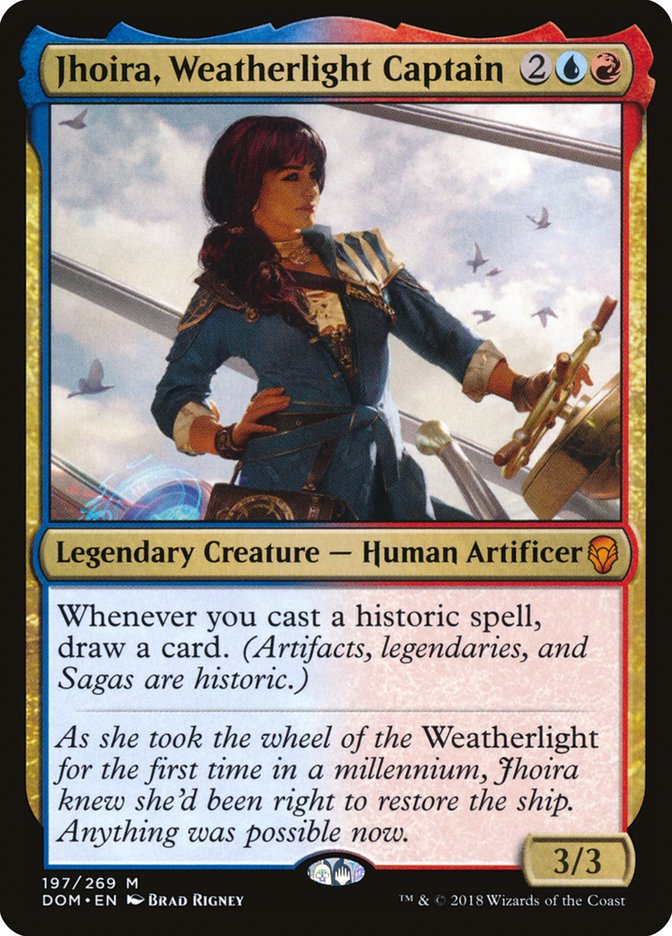Mono-Blue Paradoxical Outcome is the most powerful Standard deck by an
extremely wide margin. When the deck is functioning, it doesn’t feel like
playing Standard and it can turn a corner and go off out of almost nowhere.
Sai, Master Thopterist is an incredible card that defies comparison.
Pia Nalar is a legend with similar stats that makes a Thopter and can
sacrifice artifacts, but when Sai only makes one Thopter, you kind of feel
like you got robbed or missed an opportunity. Whirler Virtuoso can make an
impressive number of Thopters, but Sai puts Whirler to shame.
Before Sai was printed, people played Inspiring Statuary/Paradoxical
Outcome decks, but while that engine was powerful, it just took too much
mana without impacting the battlefield. Sai forgives spending mana to
cantrip Prophetic Prism onto the battlefield, because now that comes with a
Thopter, so it’s like a two-mana Skyscanner, except it’s two artifacts for
improvise and if your sacrifice the Thopter or it dies, you still have the
Prism on the battlefield to Paradoxical Outcome.
With Inspiring Statuary, Sai makes all the artifacts you cast functionally
generate twice as much mana, which makes your explosive turns far more
explosive.
Mox Amber is a card that immediately jumps out as potentially broken, but
it’s proven very hard to use in Standard because it’s hard to have enough
cheap legends to get the extra mana in a timely fashion, and it’s awkward
because it’s just a mana source but doesn’t help you until you’ve already
cast a two or three mana spell, so it generally leads you down a path of
playing too much mana in your deck. This is a deck that takes perfect
advantage of Mox Amber. Even if you only have four legends, Mox Amber is
good if you draw any of Sai, Inspiring Statuary, or Paradoxical Outcome,
and patently absurd if you draw all of them.
The deck originated as an Aetherflux Reservoir combo deck, and it can be
built that way, but it doesn’t need to be.
Karn, Scion of Urza is extremely strong with Sai, Master Thopterist, as the
Thopters make the Constructs bigger and block fliers to protect Karn, and
Karn is also great with Inspiring Statuary, as you don’t need to tap any
lands to cast it. This means that if you can get four artifacts onto the
battlefield by turn 3, you can play Karn on turn 3 and immediately make a
5/5.
To make these decks good, you need a reasonable number of cheap artifacts.
The best beyond Mox Amber are Ornithopter because it’s free, Renegade Map
because you can basically play it over a land, and Prophetic Prism because
it draws a card (and doesn’t cost a life). The next tier are one-mana
artifacts like Navigator’s Compass, Fountain of Renewal, Traveler’s Amulet,
and Pacification Array, and two-mana artifacts like Metalspinner’s
Puzzleknot.
The best interactive options are Metallic Rebuke, which is obviously great
when you have a lot of cheap artifacts, Commit, particularly because Memory
is incredible with Inspiring Statuary and Baral’s Expertise, which is great
when it has a backup mode of bouncing a bunch of Prophetic Prisms to draw
more cards and generate more Sai triggers and storm count for Aetherflux
Reservoir.
There are some other options that are a little less consistent or
synergistic. Aether Meltdown is a good way to buy time that also leaves a
permanent on the battlefield for Paradoxical Outcome, Karn’s Temporal
Sundering is a little unreliable, but obviously super powerful when you can
cast it, and River’s Rebuke is a great way to get rid of Cast Away and
Ixalan’s Bindings while also clearing all blockers to get through with
giant Constructs.
There are a few other blue cards that play very well with artifacts that
are reasonable considerations, like Glint-Nest Crane, Padeem, Consul of
Innovation, and Reverse Engineer.
To my mind, the core of this deck is:
1-2 Commit//Memory
I think the deck wants to play nineteen lands, but a lot of players play
eighteen. I actually think I’d rather play twenty lands than eighteen, as
you’d often prefer not to have to sacrifice Renegade Map, and you basically
can’t win if you don’t play your third land on turn 3.
Zhalfirin Void is the best land, since the deck really needs card selection
and colorless lands don’t hurt very much. Beyond that, there are a lot of
reasonable colorless lands to play–Inventors’ Fair, Scavenger Grounds,
Arch of Orazca, and surprisingly, even Reliquary Tower is reasonable
here–in general, Reliquary Tower is a “win more” card even when it’s good,
but with this deck I think it actually helps a lot when you want to cast
Paradoxical Outcome in your own end step against opposing blue decks if
they tap out on your turn.
Renegade Map and Prophetic Prism give you a lot of extra access to colored
mana, so you can potentially get away with a lot of colorless sources, but
the deck has a lot of minor inconsistencies because it must play 3-4 copies
of cards you really want to draw exactly one of, so adding more failure
points can really compound the risk of losing to just drawing badly. I’m
not sure how much it’s safe to push it, but my inclination is that it’s
probably okay to play around six colorless lands and thirteen islands.
The next big question is how you’re going to win the game. Technically, you
can just win with Thopters, but realistically, you can’t just rely on Sai.
So the question then becomes how many Karns and Aetherflux Reservoirs to
play. In my experience, Karn is much better against decks with a lot of
disruption and decks with a lot of non-flying creatures, so decks like
Mono-Green Ghalta or decks like Grixis Midrange, and Aetherflux Reservoir
is better against decks that try to do something big that you might want to
go over the top of, like God-Pharaoh’s Gift or the mirror match, so I
really think the right mix or plan here is going to be metagame-dependent.
Baral’s Expertise is much better if you’re playing Aetherflux Reservoir,
since it lets you spend only two mana to get Aetherflux Reservoir onto the
battlefield if you have Inspiring Statuary, and it’s also very good at
increasing the number of spells you can cast in a turn, but it’s not bad
even if you’re trying to win with Karn as a big tempo swing or way to get
your Constructs through.
It’s hard to explain exactly how powerful the deck is without seeing it
play, because the best case sounds very “Magical Christmas Land,” but
here’s a sample sequence:
- Turn 2 Prophetic Prism
- Turn 3 Sai, Mox Amber, Ornithopter, making two Thopters
- Turn 4 Inspiring Statuary, make a Thopter, so now you have
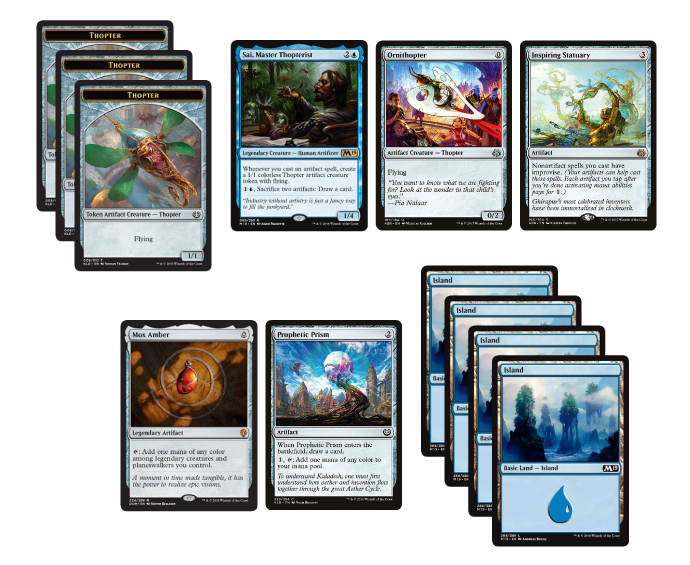
Now you can tap Inspiring Statuary and three Thopter tokens to cast Karn,
Scion of Urza and activate Karn’s -2 ability to make a Construct, then tap
Mox Amber, Prophetic Prism, Ornithopter, and the Construct token to cast
Paradoxical Outcome targeting Ornithopter, Mox Amber, Karn, Scion of Urza,
and Prophetic Prism, drawing four additional cards. Now replaying Mox Amber
and Ornithopter generates two Thopter tokens, and you still have an
untapped land and an untapped Mox Amber, so you can use those to cast
Prophetic Prism, make another Thopter, then use the Prophetic Prism and the
three new Thopters to replay the Karn and use its -2 ability again to make
another Construct.
This sequence does involve drawing the exact right mix of cards, but only
one of each. If you draw more Ornithopters or draw another Paradoxical
Outcome, it can get even crazier.
It’s rare that you’ll have all those pieces, but when you do, a sequence
like that will beat almost anything. Also, there are a lot of variations
that are great, like playing Karn on turn 3 instead, or simply not playing
Karn, but still drawing a ton of cards and making a ton of Thopters.
When I say this is the most powerful deck in Standard, I’m making a very
precise claim. It’s the most powerful, but not necessarily the best; it has
the highest potential, but it’s not all sunshine and roses in Thopter town.
If instead of drawing one of each of your good cards you draw three of
basically any of them, your draw’s basically not functional. If you draw
three Paradoxical Outcomes, you probably won’t have enough targets, Sai’s a
legend, additional copies of Inspiring Statuary are expensive and
redundant, and if you draw three Ornithopters and no Paradoxical Outcomes,
your cards might just be too weak.
The deck can also be reasonably disrupted with cards like Abrade, Duress,
and counterspells. If the deck does pick up, it can become a victim of its
own success as cards like Manglehorn and Authority of the Consuls cripple
the explosive turns and the deck’s ability to defend itself, and even more
powerful hosers like By Force exist in the format.
Personally, I prefer a build like this:
Creatures (8)
Planeswalkers (4)
Lands (19)
Spells (29)

I like playing the deck as more of a value deck rather than a full combo
deck, so I prefer leaning on Karn rather than trying to win with Aetherflux
Reservoir, but I do think having an Aetherflux Reservoir in the deck can
get you out of some hard spots, so I think it’s worth including, but I’m
not completely sure.
Because the deck wants to play Renegade Map and Prophetic Prism anyway,
it’s easy to splash another color, and it’s not clear that mono-blue is the
best build. Each other color has something to offer.
If you’re willing to play a lot of black mana, Contraband Kingpin in
conjunction with Sai can offer absurd amounts of card selection while the
body can potentially buy time to take advantage of that, but it’s hard to
make room without decreasing the artifact count, which can make the deck
fall apart which means that it basically must come at the cost of other
interaction.
Alternatively, black could just be a splash for powerful sideboard cards
like Arguel’s Blood Fast and Battle at the Bridge.
Red offers Jhoira, Weatherlight Captain, which is really explosive, but the
deck’s not exactly short on options at four mana.
Green offers an extremely weird sideboard package of Glint-Nest Crane and
Lifecrafter’s Bestiary to grind out control decks that try to answer your
important cards, but it takes a lot of space, so I’d only do it if you were
comfortable with your other matchups and struggling with U/B-based control
decks.
White offers Teferi, Hero of Dominaria, which has no particular synergy
with the deck outside of being a great card, so I think it’s better to just
play Tezzeret, Artifice Master, but it’s very easy to get a white mana by
turn 5 if you prefer the more powerful card, which has the advantage of
being able to answer cards like Ixalan’s Binding that can otherwise
permanently answer key cards in the deck (which is why I like playing at
least two Commit).
Overall, the explosiveness of the deck made it the most fun deck I’ve
played in quite a while, but some of the inconsistencies can also make it
extremely frustrating. I think there’s still some space to explore to
smooth the deck out and find the exact right mix. Ultimately, I think this
is the perfect power level for a deck like this in Standard; good enough to
be fun, exciting and competitive, but inconsistent enough not to take over,
and most importantly, in a format where real hate cards exist in case a
great build does exist.


